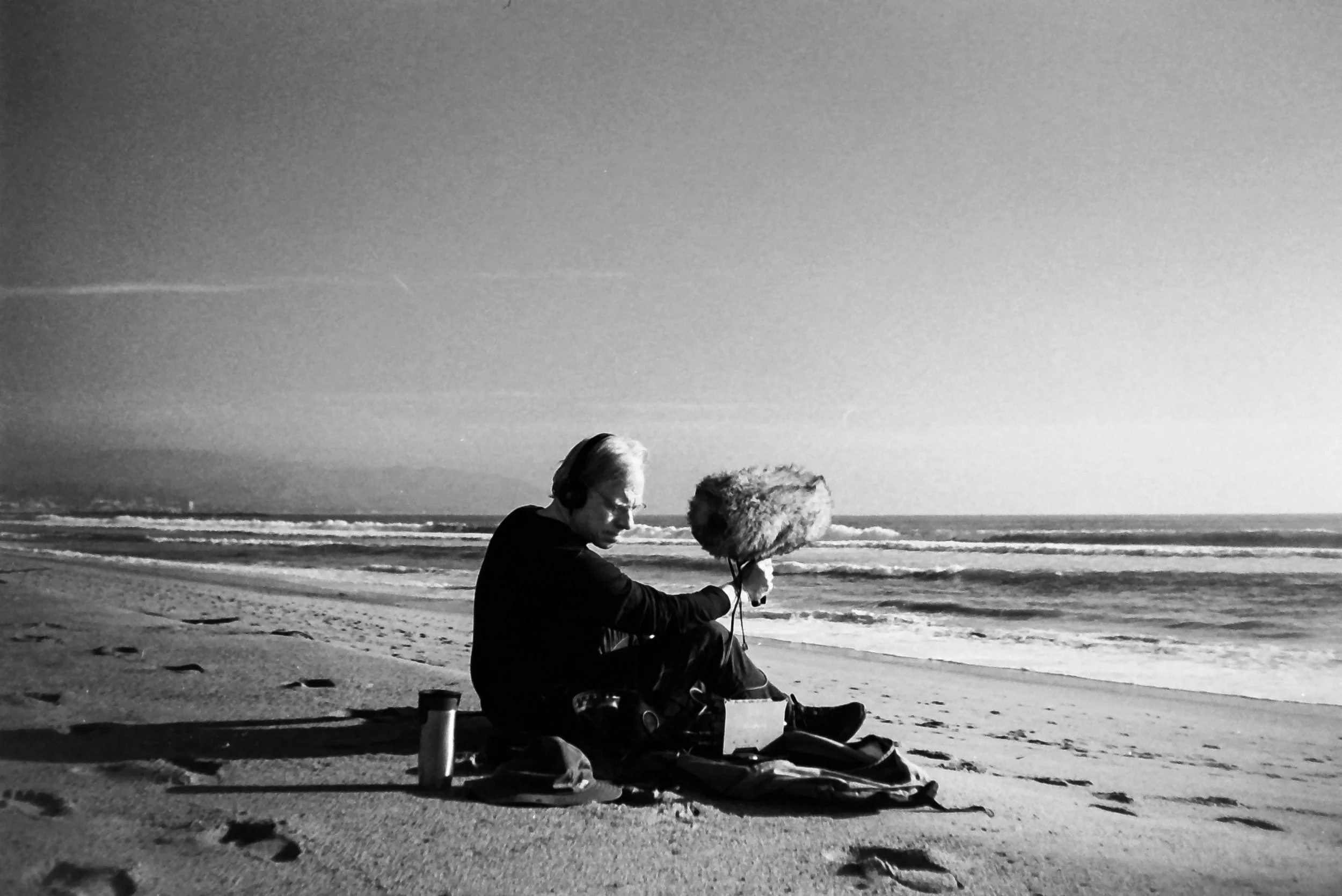
Zoopraxographers
Zoopraxographers #3 Who says the moon is heartless?
Zoopraxographers is thrilled to be back at Automata with its third edition, featuring artists Umi Hsu, Madison Brookshire, Michael Pisaro-Liu and Cherlyn Hsing-Hsin Liu. “Who says the moon is heartless?” is an evening of winds, crickets and birdsong, moving paper and sleepless poetry.
Previous Event
September 20, 2025, Saturday 8pm
(Doors at 7:30 pm)
Program:
Set 1: Listen to the wind eight hundred times
Live performance by Cherlyn Hsing-Hsin Liu & Michael Pisaro-Liu
Motion-painting, music, poetry, ≈ 15 minutes, 2025
hThis kinetic painting is created from hand-painted 35mm film, projected three times at different speeds using a hand-cranked projector resurrected from an antique 1909 Powers Cameragraph. By combining them, I wanted to create a film akin to a handscroll painting, a visual poem that sings on the wind. This is a collaborative project; music composed and performed by Michael Pisaro-Liu. "Listen to the wind eight hundred times" is from an old Chinese anecdote that speaks of the wind blowing and the grass growing again —the return to a life of ease and freedom after experiencing countless trials and turbulences. (C.H.L.)
“Listen to the wind eight hundred times” was written in response to Cherlyn Hsing-Hsin Liu’s painting “Listen to the wind eight hundred times 聽風八百遍” (2023). That work consists of countless ink marks given a sense of movement by their placement and interaction with the uneven background of rough linen; the movement comes to an end with a boat at rest. This music is composed of about 800 sound events assembled from recordings (of wind, birds, bells, clicks and wheels) in alternation with solo guitar (enhanced by a sustain pedal). One of the birds is a mourning dove recorded right outside my window. (M.P.)
Set 2: Window Film, 2025
Single-channel projection by Madison Brookshire
Digital video, 32 minutes, color, sound, 2025
Half an hour from an ongoing work of expanded cinema. This recording, Window Film, 2025, is a film unto itself and therefore has a beginning, middle, and end, but the Window Film, i.e. the 4 x 3 rectangle of blue watercolor on translucent vellum, remains and continues to run. “Changing, it rests.” (M.B.)
Set 3: Sleepless Night
Live performance by Umi Hsu
Sound performance (with cassette recorders, radio, voice, and archival letters), ≈30 minutes, 2025
Sleepless Night is a new work of sound performance that traverses the space between the unforgettable and the forgotten in the diaspora. What is the sound of language as it decays in the diaspora? Sound artist Umi Hsu builds an assemblage of memory by creating an evolving architecture of ambiences through cassette loops, radios, field recordings, and words drawn from letters from the artist’s childhood. Exposing the slippage between the interior and exterior sound of language, this performance illustrates the elusive quality of nativity in the immigrant speech and sense of self. This work is a part of the performance series that is inspired by Umi Hsu’s sound art memoir Departures / Arrivals (2024). (U.H.)
Total Runtime: approx. 80 minutes.
Featured Artists:
Cherlyn Hsing-Hsin Liu is an artist, filmmaker, and writer whose work is grounded in experimental literature, the conceptual avant-garde, and philosophy. Liu's works are concerned with materiality in different contexts and eras, as well as its transformation, symbolism, decay, and emotional resonance. For Liu materiality includes both living and inanimate matter. Through film, poetry, painting, sculpture, and other media, she reflects the light and darkness of the world she lives in. Her films have been shown at international film festivals and museums, including the Edinburgh International Film Festival, Helsinki Festival, Festival des Cinémas Différents et Expérimentaux de Paris, Image Forum Festival, Japan, Istanbul International Experimental Film Festival, The Museum of Kyoto, the San Francisco Museum of Modern Art, M+ Museum in Hong Kong, the Taipei Fine Arts Museum, among others.
Michael Pisaro-Liu (born 1961 in Buffalo, New York) is a guitarist and composer and a long-time member of the Wandelweiser collective. While, like other members of Wandelweiser, Pisaro-Liu is known for pieces of long duration with periods of silence, over the past two decades his work has branched out in many directions, including work with field recording, electronics, improvisation and large ensembles of very different kinds of instrumental constitution. Recordings of his music can be found on Edition Wandelweiser, erstwhile records, elsewhere music, Potlatch, another timbre, ftarri, winds measure and other labels. Pisaro-Liu is the Director of Composition and Experimental Music at CalArts.
Madison Brookshire lives in Los Angeles, where he makes films, paintings, and performances. His work invites viewers to become aware of perceptual processes and the sensuous experience of time. Through his work, he hopes to get closer to living. Moving between experimental film, music, and art, he often works at the edges of disciplines, frequently collaborating with musicians and composers, including Ezra Buchla, LCollective, Laura Steenberge, Mark So, and Tashi Wada. His awards include being named a 2023 Guggenheim Fellow in Fine Arts, an ARC grant from the Center for Cultural Innovation, a Rema Hort Mann Foundation Emerging Artist Grant, and being an Artist in Residence at the Echo Park Film Center and the Hammer Museum.
Umi Hsu is a sound artist and ethnomusicologist who traces the contours of migration, memory, and transformation. Having a bicultural and bilingual background, they use sound as a paralinguistic medium to surface meanings, reconstruct memory, and forge connections. With a PhD in Critical and Comparative Studies in Music from the University of Virginia, Hsu’s work has been presented by LACMA, CTM Festival in Berlin, and ONE Archives; featured in LA Times, LA Weekly, and Arts at MIT; and awarded by the NEA, Mellon Foundation, American Council for Learned Society, LA Metro, and City of West Hollywood.
Saturday 8pm
(doors 7:30pm)
September 20, 2025
—
Chinatown—LA
Automata
504 Chung King Rd, Los Angeles, CA 90012
$17 General
$15 Students and Seniors
Seating is limited. Ticket reservations are recommended.




